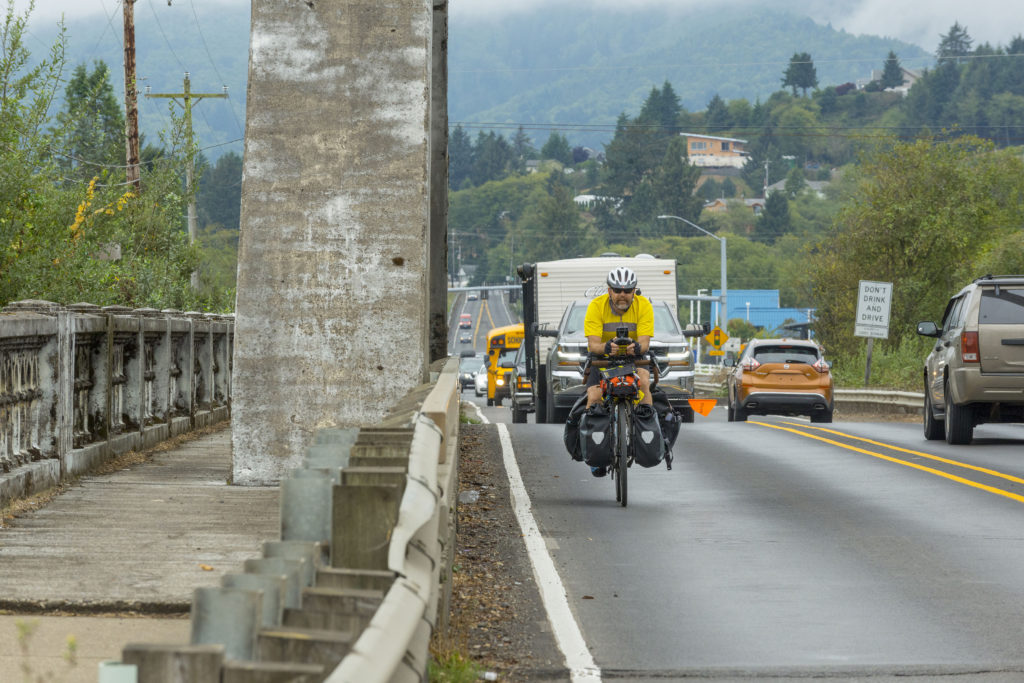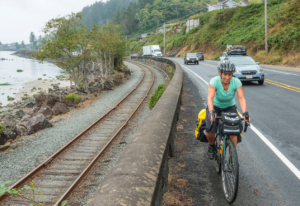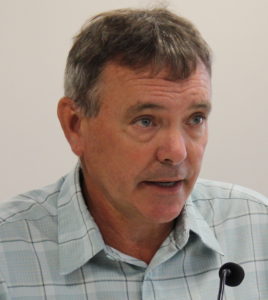
By DANA TIMS/YachatsNews.com
While cycling the length of the Oregon coast may not be for everyone, upwards of 10,000 people tackle the 370-mile trek every year.
Along the way, they contribute $3 million to $5 million in annual tourism spending generated by coastal cycling and, best of all, take in the breathtaking views of the waves, beaches and majestic headlands that define Oregon’s coastline.
The U.S. Highway 101 route almost all bikers follow, however, hasn’t been formally assessed in more than a decade, and no comprehensive planning work has ever been completed.
Such an assessment would help better define the route, identify ways state and local jurisdictions can better support riders and illuminate high-priority improvement areas.
Now, an effort started in 2018 to do just that is nearing completion, and members of the public have until April 20 to weigh in with thoughts and suggestions for improvements via an online open house hosted by the Oregon Department of Transportation.
“We want to be really visionary in what types of changes can make this an even more special experience,” said Jenna Berman, a transportation department liaison for the project. “And we know the public will have a lot of important things to say about needed changes and improvements.”

Surveys shows that cyclists inclined to take on the Oregon Coastal Bike Route love the experience, she said. Many of those, however, even seasoned veterans of cycling tourism, find portions of the route “scary” and “dangerous.”
The top concern for new and potential riders, according to those surveys, is safety. As such, the new planning effort is intended to pinpoint areas of the highway that can be improved through use of new signs and lighting, wider bike lanes and places where cyclists can be directed onto alternative routes that roughly parallel U.S. 101.
A number of “critical needs” areas have already been identified by route planners.
These include downtown Waldport, which has four traffic lanes and no bike lanes. One proposed long- term solution includes a promenade along Alsea Bay that provide a comfortable route for people to walk and bike along a narrow stretch of the normally bustling highway.
Another is the highway shoulder south of Yachats, which, while extremely scenic, is particularly narrow and hilly. Suggested fixes include signs in advance to alert drivers and bikers of road-sharing ahead, a button-activated flashing beacon to warn that bikers or hikers are walking on the bridge and even a shuttle service that could allow people with bikes to avoid riding the narrow section entirely.
Planning ahead for even routine projects
Roy Kinion, Lincoln County’s Public Works Department director, calls the planning effort a “no-brainer.”

“The more tourists you bring through Lincoln County, the more money will be spent,” said Kinion, who also sits on the county’s bicycle/pedestrian advisory committee. “If we can cater to the needs of cyclists, you’re going to see just that much more revenue produced.”
Kinion and others involved in coastal transportation planning efforts say that identifying problem areas ahead of time can allow jurisdictions to be ready with fixes to address those needs when routine maintenance and already-scheduled road and shoulder repairs are undertaken.
What’s out of the question, said Berman, the transportation department liaison, is a separated path running the length of the route from Astoria in the north to Brookings.
“From a number of standpoints, that’s just not feasible,” said Berman, who rode the entire route with a friend in 2012. “So we’re working with what we have, which just happens to be a world-class cycling adventure.”
While there is a legislative component to the Oregon Coast Bike Route – meaning it will at some point be considered for stand-alone state funding possibilities – addressing many problem areas will fall to individual jurisdictions and state transportation department fixes.
In the meantime, additional public input will help determine what the next generation of coastal cyclists experience.
“We’d really like to hear from as many people as possible, and that includes the many motorists who also drive and enjoy the highway,” she said. “The more folks we hear from, the better the outcome is bound to be.”



